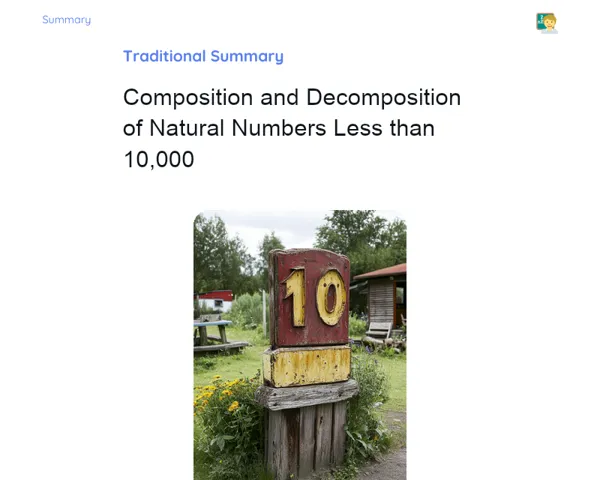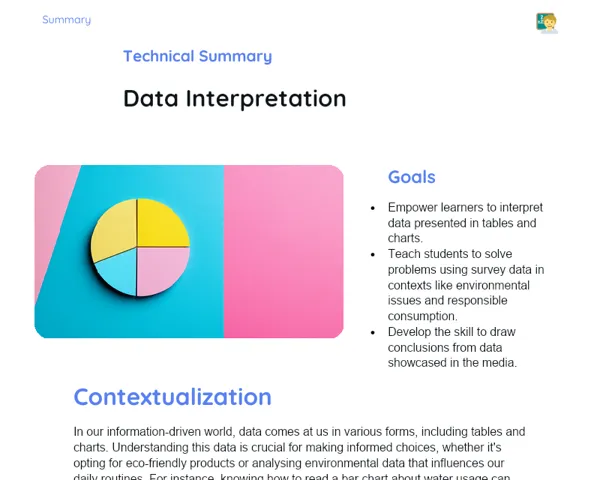Objectives
1. Recognise when two fractions do not share the same denominator and convert them by using equivalent fractions.
2. Develop logical and critical reasoning skills when tackling mathematical problems involving fractions.
Contextualization
Did you know that fractions have been utilised since ancient times to solve everyday problems? For instance, the ancient Egyptians used fractions for dividing land and calculating taxes. This highlights how fractions are essential not only in mathematics but also in everyday life. Understanding and manipulating fractions, especially when it comes to common denominators, can assist in tasks like adjusting cooking recipes or splitting bills, making maths far more relatable and applicable to real life!
Important Topics
Fractions and Denominators
Fractions represent parts of a whole and consist of a numerator (the part we have) and a denominator (the total). When performing mathematical operations like addition or subtraction with fractions, it is vital that the denominators are identical, leading us to the idea of common denominators. Finding a common denominator among fractions allows us to perform arithmetic operations smoothly, thereby aiding understanding and problem-solving.
-
Common Denominator: A number that is a multiple of all denominators in question. Identifying a common denominator is key for adding or subtracting fractions.
-
Operations with Fractions: For adding or subtracting fractions, all denominators must be the same. This can be achieved by obtaining equivalent fractions with common denominators.
-
Equivalent Fractions: Fractions that signify the same quantity but are expressed differently. Converting fractions to equivalent forms with common denominators simplifies calculations.
Equivalent Fractions
Equivalent fractions are those that represent the same amount, even if they are written in different forms. For example, 1/2 and 2/4 are equivalent since both represent half of a whole. The ability to identify and work with equivalent fractions is crucial for performing mathematical operations with fractions, particularly when searching for common denominators.
-
Importance in Mathematics: Working with equivalent fractions simplifies calculations and enhances comprehension of mathematical relationships, such as comparisons.
-
Converting Fractions: By multiplying or dividing the numerator and denominator by the same number, you create an equivalent fraction. This is especially useful for adjusting fractions to a new common denominator.
-
Practical Applications: Identifying equivalent fractions has practical uses in contexts such as adjusting recipes or splitting resources fairly.
Operations with Fractions
Adding, subtracting, multiplying, and dividing fractions are essential operations that require a firm grasp of equivalent fractions and common denominators. It's critical that the denominators are the same for these operations to be accurate. This concept is applicable in numerous everyday scenarios, such as following recipes or dividing portions.
-
Addition and Subtraction: For adding or subtracting fractions, the denominators must be equal. If they aren't, the fractions need to be converted to equivalent fractions with common denominators.
-
Multiplication and Division: In these operations, the denominators do not have to match, but simplifying fractions before the operation can make calculations easier.
-
Practical Applications: Mastery of operations with fractions is paramount for everyday tasks, such as determining discounts when shopping or preparing mixtures in the right proportions.
Key Terms
-
Fraction: A portion of a whole, represented by a numerator above a denominator.
-
Common Denominator: A number that serves as a multiple of all involved denominators for fractions being added or subtracted.
-
Equivalent Fractions: Fractions that convey the same value but are articulated differently, typically with various denominators.
For Reflection
-
Why is it essential for the denominators to match when adding or subtracting fractions? How does this simplify the mathematical process?
-
In what ways can you implement the concept of equivalent fractions and common denominators in daily activities like cooking recipes or sharing expenses?
-
What connection exists between the ability to handle equivalent fractions and the proficiency in solving more intricate mathematical problems in different areas?
Important Conclusions
-
In this session, we delved into the concept of fractions and the significance of common denominators for successful mathematical operations. The capability to recognise and produce equivalent fractions is essential for various practical applications, from adjusting recipes to dividing costs.
-
We appreciate that the mathematics of fractions transcends mere numbers; it equips us with the tools to resolve everyday issues more efficiently.
-
Effectively working with fractions also enhances logical and critical reasoning skills, fundamental attributes not only in mathematics but in various aspects of life.
To Exercise Knowledge
- Modified Recipe: Select a simple recipe and alter the ingredient quantities using equivalent fractions. For instance, if a recipe requires 1/2 cup of flour, try using 1/4 and 1/8, and calculate the needed amounts for each ingredient. 2. Fair Division: Picture that you and two friends are enjoying a pizza. Divide the total slices equally among yourselves, while using fractions with different denominators to see if each person receives the same portion. 3. Expense Diary: Maintain a record of your expenses for a week; at the end of each day, calculate the percentage of your total expenses against a figure you designate. This will help you practice converting fractions to percentages and vice versa.
Challenge
✨ Chef-Frac Challenge: Get creative by crafting your own recipe using fractions! For example, come up with a new juice blend consisting of 1/3 orange juice, 1/4 apple juice, and 1/6 pineapple juice. Then, calculate the total of each ingredient for different quantities of final juice and tweak the recipe for 10, 20, and 30 servings.
Study Tips
-
Regularly engage with online games or educational apps focused on fractions and fraction operations. This can make learning more enjoyable and engaging.
-
Teach the concept of fractions and equivalent fractions to someone at home. Teaching somebody else is a terrific approach to bolster your own understanding and pinpoint areas needing improvement.
-
Employ fraction cards to visualise and practise operations with fractions. This can assist in making the concepts more concrete and comprehensible.



